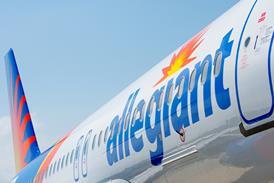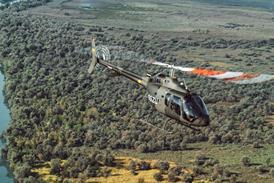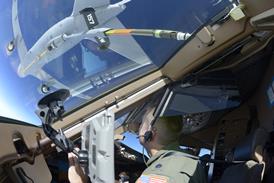Failure to remove a pitot probe cover and a cascade of resulting pilot missteps caused a 2023 upset in flight near Hartford that involved a Bombardier Challenger 300 business jet and killed one passenger.
That is according to the National Transportation Safety Board’s (NTSB) final report, released on 5 December, which says the pilots took off despite the aircraft not being in airworthy condition.
“The flight crew’s failure to remove the right-side pitot probe cover before flight, their decision to depart with a no-go advisory message following an aborted take-off, and their selection of the incorrect non-normal check list in flight… resulted in an in-flight upset that exceeded the manoeuvring load factor limitations of the airplane,” killing one passenger, says the report.

The accident involved a Challenger 300 (registration N300ER) operating a 3 March 2023 flight from Keene in New Hampshire to Leesburg in Virginia. Three passengers were aboard.
Prior to departing Keene, the co-pilot, after being interrupted while conducting a pre-flight inspection of the jet, failed to remove a cover from the jet’s right-side pitot probe. As a result, during the take-off roll the aircraft’s right primary airspeed indicator failed after the jet exceeded 40kt (74km/h), prompting the pilots to reject the take-off.
After stopping the aircraft, the co-pilot removed the pitot tube cover and returned to the cockpit, where the pilots discussed a “Rudder Limiter Fault” advisory on the flight computer. Failing to clear the message, they decided to take-off anyway because it was “only” an advisory, according to the flight voice recorder.
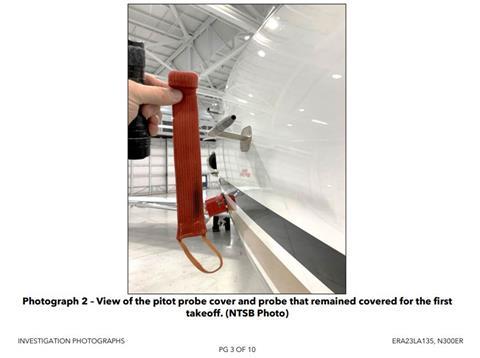
The NTSB says the pilots did not consult the aircraft’s “Go/No Go” guide, which listed the Rudder Limiter Fault as a no-go item.
The aircraft took off at 15:35, and during ascent the pilots received numerous other cockpit warnings, which the captain attempted to clear by repeatedly engaging and disengaging the autopilot. Those warnings included an “[Autopilot] Holding Nose Down” caution.
According to the NTSB, the speed discrepancy that had occurred during the aborted take-off prompted faults that had inhibited the jet’s autopilot from operating the horizontal stabiliser trim. As a result, the jet’s stabiliser was miss-trimmed. But the autopilot was keeping it level by using the flight controls, according to the NTSB.
The accident likely would have been prevented had the pilots then completed the “AP Holding Nose Down” check list, the report adds. That check list warns about out-of-trim conditions and “abrupt changes to control forces” when disconnecting the autopilot. It also instructs pilots to hold the control column “firmly” to prevent upsets.
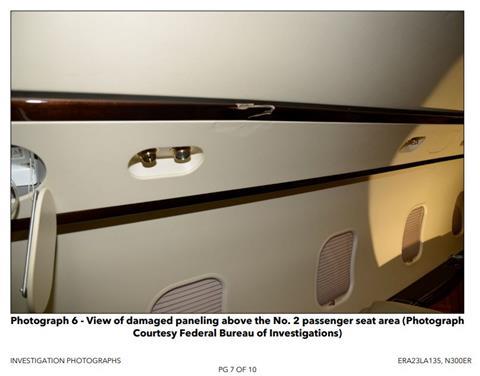
Instead, the pilots incorrectly began completing the “primary stabiliser trim failure check list”, the first action of which is to switch off the stabiliser trim.
“As soon as the switch position was moved, the autopilot disconnected, and the airplane, which had been in a 3° nose-up attitude, rapidly pitched up to 11° in one second. The normal acceleration then rapidly rose to 4g,” the report says. “The [captain] then pushed the control column forward with at least 90lbs of force, the airplane pitched down to a near-nose-level attitude and the normal acceleration was reduced to -2.3g.”
The column was then pulled back through neutral, “and the airplane rapidly pitched up to over 20° nose-up and more than 4g,” it adds.
The upset injured one passenger who had not been wearing a seatbelt. The co-pilot said over the radio that the passenger “has a serious cut… at the top of her head”.
The pilots diverted and landed at Bradley International airport in Connecticut. The passenger later died.
Bombardier declines to comment.



